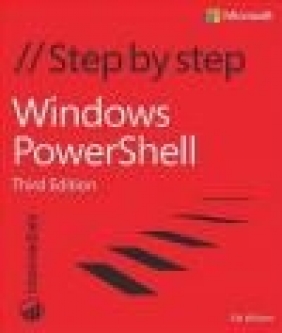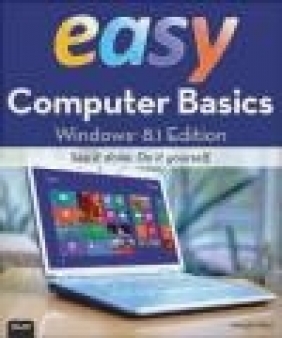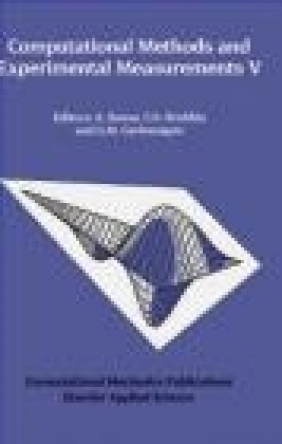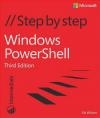Windows PowerShell Step by Step
Ed Wilson
Windows PowerShell Step by Step
Ed Wilson
- Producent: Microsoft
- Rok produkcji: 2015
- ISBN: 9780735675117
- Ilość stron: 704
- Oprawa: Miękka
Niedostępna
Opis: Windows PowerShell Step by Step - Ed Wilson
Your hands-on guide to Windows PowerShell scripting fundamentals Expand your expertise--and teach yourself the fundamentals of Windows PowerShell scripting, including features available in Windows PowerShell 5. If you are an IT professional, power user, or consultant, you'll get the guidance, exercises, and code you need to master core techniques for automating Windows setup, deployment, and management. Discover how to: * Run cmdlets and command-line utilities* Administer Windows-based servers and desktops with built-in cmdlets* Use providers to access external information* Write and run scripts from the Windows ISE* Create functions that are easy to maintain* Build standardized environments with profiles* Automate Windows systems with WMI, CIM cmdlets, and remoting* Automate Active Directory Domain Services (AD DS)* Debug scripts and handle errors* Run commands that survive interruptions* Use Desired State Configuration (DSC) to manage software services and their environments* Get powerful new modules from PowerShell Gallery About You This book is for: * IT professionals and power users who want to get productive with Windows PowerShell, including new features in Windows PowerShell 5* Windows system administrators who want to be more efficient and productive* Anyone pursuing Windows PowerShell certifications No experience with Windows PowerShell or other scripting technologies necessaryIntroduction xix Chapter 1: Overview of Windows PowerShell 5.0 1 Understanding Windows PowerShell 1 Using cmdlets 3 Installing Windows PowerShell 3 Deploying Windows PowerShell to down-level operating systems 3 Using command-line utilities 4 Security issues with Windows PowerShell 6 Controlling execution of Windows PowerShell cmdlets 6 Confirming actions 7 Suspending confirmation of cmdlets 8 Working with Windows PowerShell 10 Accessing Windows PowerShell 10 Configuring the Windows PowerShell console 11 Supplying options for cmdlets 11 Working with the help options 12 Exploring commands: Step-by-step exercises 19 Chapter 1 quick reference 22 Chapter 2: Using Windows PowerShell cmdlets 23 Understanding the basics of cmdlets 23 Using the Get-ChildItem cmdlet 24 Obtaining a directory listing 24 Formatting a directory listing by using the Format-List cmdlet 26 Using the Format-Wide cmdlet 27 Formatting a directory listing by using Format-Table 29 Formatting output with Out-GridView 31 Taking advantage of the power of Get-Command 36 Searching for cmdlets by using wildcard characters 36 Using the Get-Member cmdlet 44 Using the Get-Member cmdlet to examine properties and methods 45 Using the New-Object cmdlet 50 Creating and using the wshShell object 50 Using the Show-Command cmdlet 52 Windows PowerShell cmdlet naming helps you learn 54 Windows PowerShell verb grouping 55 Windows PowerShell verb distribution 55 Creating a Windows PowerShell profile 57 Working with cmdlets: Step-by-step exercises 59 Chapter 2 quick reference 63 Chapter 3: Understanding and using Windows PowerShell providers 65 Understanding Windows PowerShell providers 65 Understanding the alias provider 66 Understanding the certificate provider 69 Understanding the environment provider 76 Understanding the filesystem provider 80 Understanding the function provider 85 Using the registry provider to manage the Windows registry 87 The two registry drives 88 The short way to create a new registry key 95 Dealing with a missing registry property 98 Understanding the variable provider 99 Exploring Windows PowerShell providers: Step-by-step exercises 103 Chapter 3 quick reference 107 Chapter 4: Using Windows PowerShell remoting and jobs 109 Understanding Windows PowerShell remoting 109 Classic remoting 109 WinRM 114 Using Windows PowerShell jobs 122 Using Windows PowerShell remoting and jobs: Step-by-step exercises 132 Chapter 4 quick reference 135 Chapter 5: Using Windows PowerShell scripts 137 Why write Windows PowerShell scripts? 137 The fundamentals of scripting 139 Running Windows PowerShell scripts 139 Turning on Windows PowerShell scripting support 140 Transitioning from command line to script 143 Manually running Windows PowerShell scripts 145 Understanding variables and constants 148 Using the While statement 154 Constructing the While statement in Windows PowerShell 154 A practical example of using the While statement 156 Using special features of Windows PowerShell 157 Using the Do...While statement 157 Using the range operator 158 Operating over an array 158 Casting to ASCII values 159 Using the Do...Until statement 160 Comparing the Windows PowerShell Do...Until statement with VBScript 160 Using the Windows PowerShell Do statement 161 The For statement 162 Using the For statement 163 Using the Foreach statement 164 Exiting the Foreach statement early 166 Using the If statement 168 Using assignment and comparison operators 169 Evaluating multiple conditions 170 The Switch statement 171 Using the Switch statement 172 Controlling matching behavior 174 Creating multiple folders: Step-by-step exercises 174 Chapter 5 quick reference 177 Chapter 6: Working with functions 179 Understanding functions 179 Using functions to provide ease of code reuse 186 Including functions in the Windows PowerShell environment 188 Using dot-sourcing 188 Using dot-sourced functions 190 Adding help for functions 191 Using a here-string object for help 192 Using two input parameters 194 Using a type constraint in a function 198 Using more than two input parameters 200 Using functions to encapsulate business logic 202 Using functions to provide ease of modification 204 Understanding filters 209 Creating a function: Step-by-step exercises 213 Chapter 6 quick reference 216 Chapter 7: Creating advanced functions and modules 217 The [cmdletbinding] attribute 217 Easy verbose messages 218 Automatic parameter checks 219 Adding support for the -WhatIf switch parameter 222 Adding support for the -Confirm switch parameter 223 Specifying the default parameter set 224 The Parameter attribute 224 The Mandatory parameter property 225 The Position parameter property 226 The ParameterSetName parameter property 227 The ValueFromPipeline property 228 The HelpMessage property 229 Understanding modules 230 Locating and loading modules 230 Installing modules 235 Creating a module 246 Creating an advanced function and installing a module: Step-by-step exercises 253 Chapter 7 quick reference 257 Chapter 8: Using the Windows PowerShell ISE 259 Running the Windows PowerShell ISE 259 Navigating the Windows PowerShell ISE 260 Working with the script pane 263 Using tab expansion and IntelliSense 264 Working with Windows PowerShell ISE snippets 266 Using Windows PowerShell ISE snippets to create code 266 Creating new Windows PowerShell ISE snippets 268 Removing user-defined Windows PowerShell ISE snippets 269 Using the Commands add-on and snippets: Step-by-step exercises 270 Chapter 8 quick reference 274 Chapter 9: Working with Windows PowerShell profiles 275 Six different Windows PowerShell profiles 275 Understanding the six Windows PowerShell profiles 276 Examining the $profile variable 276 Determining whether a specific profile exists 278 Creating a new profile 279 Design considerations for profiles 279 Using one or more profiles 281 Using the All Users, All Hosts profile 283 Using your own file 284 Grouping similar functionality into a module 285 Where to store the profile module 285 Creating and adding functionality to a profile: Step-by-step exercises 286 Chapter 9 quick reference 289 Chapter 10: Using WMI 291 Understanding the WMI model 292 Working with objects and namespaces 292 Listing WMI providers 297 Working with WMI classes 298 Querying WMI 301 Obtaining service information: Step-by-step exercises 306 Chapter 10 quick reference 312 Chapter 11: Querying WMI 313 Alternate ways to connect to WMI 313 Returning selective data from all instances 321 Selecting multiple properties 322 Choosing specific instances 325 Using an operator 327 Shortening the syntax 330 Working with software: Step-by-step exercises 332 Chapter 11 quick reference 339 Chapter 12: Remoting WMI 341 Using WMI against remote systems 341 Supplying alternate credentials for the remote connection 342 Using Windows PowerShell remoting to run WMI 345 Using CIM classes to query WMI classes 346 Working with remote results 348 Reducing data via Windows PowerShell parameters 352 Reducing data via WQL query 353 Running WMI jobs 355 Using Windows PowerShell remoting and WMI: Step-by-step exercises 357 Chapter 12 quick reference 360 Chapter 13: Calling WMI methods on WMI classes 361 Using WMI cmdlets to execute instance methods 361 Using the Terminate method directly 363 Using the Invoke-WmiMethod cmdlet 365 Using the [wmi] type accelerator 366 Using WMI cmdlets to work with static methods 367 Executing instance methods: Step-by-step exercises 370 Chapter 13 quick reference 373 Chapter 14: Using the CIM cmdlets 375 Using the CIM cmdlets to explore WMI classes 375 Using the Get-CimClass cmdlet and the -ClassName parameter 375 Finding WMI class methods 377 Filtering classes by qualifier 379 Retrieving WMI instances 383 Reducing returned properties and instances 383 Cleaning up output from the command 384 Working with associations 385 Retrieving WMI instances: Step-by-step exercises 392 Chapter 14 quick reference 394 Chapter 15: Working with Active Directory 395 Creating objects in Active Directory 395 Creating an OU 395 ADSI providers 397 LDAP names 399 Creating users 405 What is user account control? 408 Working with users 409 Creating multiple OUs: Step-by-step exercises 423 Chapter 15 quick reference 429 Chapter 16: Working with the AD DS module 431 Understanding the Active Directory module 431 Installing the Active Directory module 431 Getting started with the Active Directory module 433 Using the Active Directory module 433 Finding the FSMO role holders 435 Discovering Active Directory 439 Renaming Active Directory sites 442 Managing users 443 Creating a user 446 Finding and unlocking Active Directory user accounts 447 Finding disabled users 449 Finding unused user accounts 451 Updating Active Directory objects: Step-by-step exercises 454 Chapter 16 quick reference 457 Chapter 17: Deploying Active Directory by using Windows PowerShell 459 Using the Active Directory module to deploy a new forest 459 Adding a new domain controller to an existing domain 465 Adding a read-only domain controller 468 Installing domain controller prerequisites and adding to a forest: Step-by-step exercises 470 Chapter 17 quick reference 472 Chapter 18: Debugging scripts 473 Understanding debugging in Windows PowerShell 473 Understanding the three different types of errors 473 Using the Set-PSDebug cmdlet 479 Tracing the script 479 Stepping through the script 483 Enabling strict mode 488 Debugging the script 492 Setting breakpoints 492 Setting a breakpoint on a line number 492 Setting a breakpoint on a variable 495 Setting a breakpoint on a command 499 Responding to breakpoints 501 Listing breakpoints 503 Enabling and disabling breakpoints 504 Deleting breakpoints 504 Debugging a function: Step-by-step exercises 505 Chapter 18 quick reference 509 Chapter 19: Handling errors 511 Handling missing parameters 511 Creating a default value for a parameter 512 Making the parameter mandatory 513 Limiting choices 514 Using PromptForChoice to limit selections 514 Using Test-Connection to identify computer connectivity 516 Using the -contains operator to examine the contents of an array 517 Using the -contains operator to test for properties 519 Handling missing rights 521 Using an attempt-and-fail approach 522 Checking for rights and exiting gracefully 522 Handling missing WMI providers 523 Handling incorrect data types 532 Handling out-of-bounds errors 536 Using a boundary-checking function 536 Placing limits on the parameter 537 Using Try...Catch...Finally 538 Catching multiple errors 541 Using PromptForChoice to limit selections and using Try...Catch...Finally: Step-by-step exercises 544 Chapter 19 quick reference 546 Chapter 20: Using the Windows PowerShell workflow 547 Why use workflows? 547 Workflow requirements 548 A simple workflow 548 Parallel PowerShell 549 Workflow activities 552 Windows PowerShell cmdlets as activities 553 Disallowed core cmdlets 554 Non-automatic cmdlet activities 554 Parallel activities 555 Checkpointing Windows PowerShell workflow 556 Understanding checkpoints 556 Placing checkpoints 556 Adding checkpoints 556 Adding a sequence activity to a workflow 559 Creating a workflow and adding checkpoints: Step-by-step exercises 561 Chapter 20 quick reference 563 Chapter 21: Managing Windows PowerShell DSC 565 Understanding Desired State Configuration 565 The DSC process 566 Configuration parameters 568 Setting dependencies 570 Controlling configuration drift 571 Modifying environment variables 573 Creating a DSC configuration and adding a dependency: Step-by-step exercises 576 Chapter 21 quick reference 580 Chapter 22: Using the PowerShell Gallery 581 Exploring the PowerShell Gallery 581 Configuring and using PowerShell Get 583 Installing a module from the PowerShell Gallery 585 Configuring trusted installation locations 586 Uninstalling a module 586 Searching for and installing modules from the PowerShell Gallery: Step-by-step exercises 587 Chapter 22 quick reference 589 Appendix A: Windows PowerShell scripting best practices 591 Appendix B: Regular expressions quick reference 599 Index 603 About the author 631
Szczegóły: Windows PowerShell Step by Step - Ed Wilson
Tytuł: Windows PowerShell Step by Step
Autor: Ed Wilson
Producent: Microsoft
ISBN: 9780735675117
Rok produkcji: 2015
Ilość stron: 704
Oprawa: Miękka
Waga: 1.04 kg






























